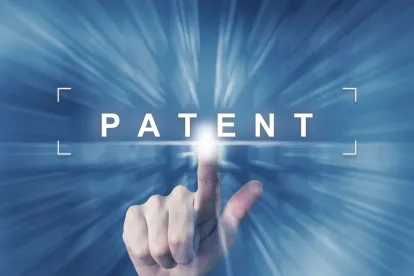Finding that a patent’s preamble was not limiting and the patent owner’s secondary considerations of non-obviousness were weak, the US Court of Appeals for the Federal Circuit upheld a finding of obviousness by the Patent Trial and Appeal Board (PTAB). Shoes By Firebug LLC v. Stride Rite Children’s Grp., LLC, Case Nos. 19-1622, -1623 (Fed. Cir. June 25, 2020) (Lourie, J.).
Stride Rite filed two inter partes review petitions challenging the patentability of two of Firebug’s patents directed to illuminated footwear. The patents describe footwear with light sources imbedded between multiple layers of upper portions of the footwear. The PTAB found the challenged claims unpatentable as obvious in view of the prior art references, concluding that the preambles of both Firebug patents did not limit the claims and Firebug’s evidence of secondary considerations of non-obviousness did not offset the disclosure of the references. Firebug appealed
Firebug asserted that the term “textile” in the preamble phrase “internally illuminated textile footwear” limited the claims and distinguished them from the prior art. Firebug also asserted that the PTAB failed to consider two license agreements that included the patents when considering secondary considerations.
The Federal Circuit affirmed the PTAB, concluding that the “textile” preamble in one of the patents was non-limiting because the body of the claim was a structurally complete invention without the preamble, and therefore the preamble was merely a non-limiting statement of intended purpose. Following the preamble, the claim recited “a footwear” and “internally illuminated textile footwear.”
The Federal Circuit found that the same preamble in the other challenged patent was limiting, however. The body of the claim recited “the footwear” and relied on the preamble for antecedent basis for “footwear.” The Court noted that reliance on a preamble for antecedent basis alone does not make a preamble limiting, but it does show an inventor’s intent that the preamble limit the scope of the claim. In this case, the claim required the illumination system to be housed in the footwear recited in the preamble, rendering the preamble limitation necessary. Despite this issue victory for Firebug, the Court affirmed the unpatentability of the patent under the PTAB’s alternative finding that the prior art references disclosed the limitations of the preamble, rendering the PTAB’s error harmless.
The Federal Circuit also affirmed the PTAB’s finding regarding Firebug’s evidence of secondary considerations of non-obviousness. Overall, Firebug’s evidence was characterized as “weak,” even assuming there was a nexus between the patents and the two license agreements that Firebug argued were not properly considered. The Court found that Firebug’s evidence of industry praise, commercial success and copying was entitled to little weight for several of reasons:
-
The praise evidence came from a salesman who refused to be deposed and hearsay statements from the inventor.
-
The commercial sales figures included products not covered by the patents.
-
There was no evidence that Stride Rite had access to Firebug’s products to copy them.




 />i
/>i

